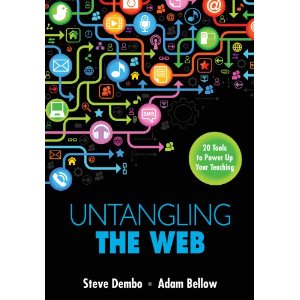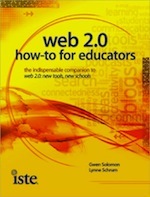In one of my graduate courses, I had to pick a leader and read a biography about them. Since the name of my game is technology in education, I decided to go with someone in the technology field. I thought Steve Jobs was a good choice, and I’m glad I went with him.
Aside from knowing he was a creative genius, I really knew nothing about him. Walter Isaacson could not have painted a clearer picture in his biography Steve Jobs. Whether you’re an Apple or PC fan, I highly recommend the book to anyone interested in technology. Not only does the book cover Jobs’ life, but it’s almost like a history of technology too (in part because Jobs had such a big hand in many groundbreaking developments).

Cover of Steve Jobs by Walter Isaacson
Aside from being an interesting account of the development of computers, other technology and Jobs’ life, there are also many lessons educators can take away from Jobs’ examples (Avoiding his narcissistic and mercurial outbursts, of course!). I’ll leave you with two of my favorite takeaways from the book.
Adam Bellow suggests in his ISTE 2013 Keynote that schools should be more like start up companies. Jobs is the perfect example of a risk taker through his start up efforts. Not everything he tried worked out, but he learned from his (and companies’ ) mistakes. He wasn’t afraid to take risks, and teachers and students shouldn’t be afraid to take risks either. When students are afraid to take risks, they become too afraid of getting the wrong answer. When teachers are afraid to take risks, they become too afraid to try new things in their classroom with students.
Jobs often said that he did not conduct consumer research because consumers did not know what they wanted until Apple showed them what they needed. As educators, we must find a way to constantly stay ahead of the curve by anticipating what our students will need; they’re relying on us to prepare them for their future. We must give them the skills they will need to change the world. We must teach them to Think Different.
Here’s to the crazy ones. The misfits. The rebels. The troublemakers. The round pegs in the square holes. The ones who see things differently. They’re not fond of rules. And they have no respect for the status quo. You can quote them, disagree with them, glorify or vilify them. About the only thing you can’t do is ignore them. Because they change things. They push the human race forward. And while some may see them as the crazy ones, we see genius. Because the people who are crazy enough to think they can change the world are the ones who do. -Apple’s Think Different advertising campaign
What did you take away from Isasscon’s Steve Jobs?
Tech To You Later!
Katie
 This episode features the following books:
This episode features the following books:


